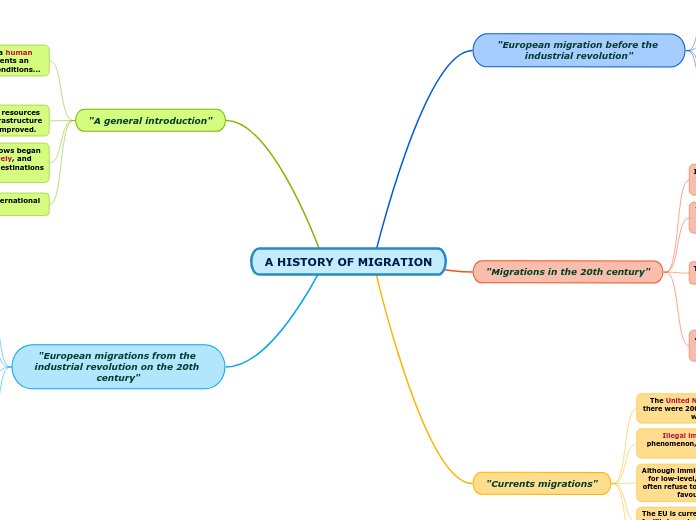A HISTORY OF MIGRATION
"European migration before the industrial revolution"
The typical migration of rural societies has two main characteristics:
Experienced migrants, who were able to move to different places and adapt to different environments;
Migrants who were able to generate a surplus population that could support further migration.
In the first millennium A.D., invasions and occupations were the largest migratory flows within Europe...
An example of both is the migration of the Germanic peoples, which occurred after the decline of the Roman Empire in 476 AD.
After the late Middle Ages, the mobility of Europeans increased over short and long distances, thanks to...
-New technological innovations;
-Better infrastructure;
-Improvements in animal-drawn transport.
Transoceanic migration began after 1500 and Europe became the source of new waves of migration.
It is estimated that about one million Europeans moved to America in each century between 1500 and 1800.
"Migrations in the 20th century"
In the 20th century, the foreign demand for European labour decreased and the rate of population growth in Europe slowed down.
The First World War and migration policies drastically reduced the scope of transcontinental migration.
In the United States, for example, the National Origin Act of 1924 set a 'cap' on the maximum number of migrants allowed into the country.
The world wars caused internal migration in Europe...
People left poorer places to settle in richer, more industrialised ones.
-Italy;
-Spain;
Have been considered 'double migration' countries, because they experienced internal migration from the south to the north and migration to other countries.
After the oil crisis of 1973-74, a new phase of economic reconstruction put an end to mass internal migration in Europe.
The process of globalisation has progressively increased the number of countries of emigration, which now include nations in:
-Africa;
-South America;
-the Middle East;
-South-East Asia.
"Currents migrations"
The United Nations estimates that in 2010 there were 200 million migrants, or 3% of the world's population...
In the same year, there were 25 million non-Europeans in Europe, or 5% of the European population.
Illegal immigration is a widespread phenomenon, affecting most of the Western world.
In 2011, the Arab Spring caused a wave of emigration, especially in the Mediterranean area. Most of the refugees and migrants in these flows tried to enter Europe illegally.
Although immigrants help to meet the demand for low-level, low-paid jobs that Europeans often refuse to do, European countries tend to favour 'circular migration'...
These are temporary and often seasonal flows of unskilled workers.
The EU is currently considering a 'blue card' to facilitate and guarantee the income of its most qualified and specialised migrants.
The history of the 20th century has shown that temporary migration actually tends to become permanent.
From 1945 to 1973, streams of Turks moved to Germany for temporary manual work and eventually settled and formed a large community that still constitutes a quarter of the total foreign labour force in Germany.
"A general introduction"
Moving between territories is a human prerogative because it represents an opportunity to improve living conditions...
It has enabled mankind to survive;
Allowed it to disperse across continents;
Encouraged the spread of agriculture;
Caused empty territories to settle;
In the modern age (1492-1789) resources increased and both transport infrastructure and means of communication improved.
Eurasia, Africa and America were all linked by maritime transport.
In the 19th century, migratory flows began to flow more rapidly and intensively, and had a new impact on both their destinations and their places of origin.
More recent migration flows were often directed:
Towards urban areas;
Were linked to manufacturing and trade activities.
As a consequence of the new international migrations..
There is a serious political conflict between the migrants' destination countries and their places of origin.
In most countries, these governmental migration policies have recently become more rigorous and selective.
"European migrations from the industrial revolution on the 20th century"
In the second half of the 19th century, promising new territories attracted large numbers of poor European immigrants.
-South America;
-Australia;
-South Africa...
Offered the opportunity to cultivate land and extract raw material.
In the 19th century Europe became increasingly urbanised and growing manufacturing and service industries replaced agricultural activity.
This encouraged migration!
Thanks to the development of infrastructure such as steamships, Europe's labour surplus could be transferred between continents more easily than ever before...
Among other destinations, a flood of emigrants left for:
-The USA;
Emigration to the US was three times greater than emigration to any other destination.
-Argentina and Uruguay;
-Canada;
-Brazil;
Australia and New Zealand.
